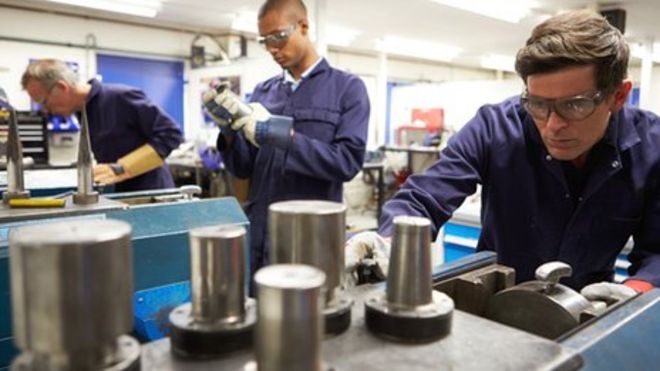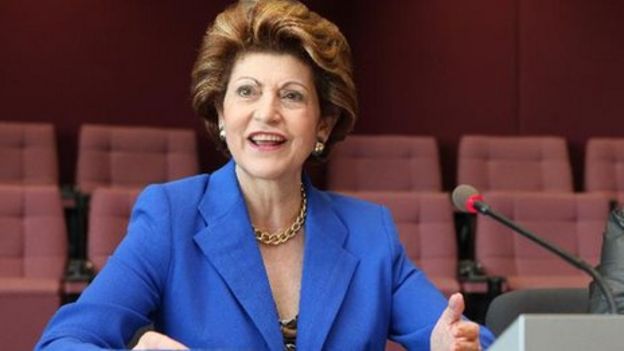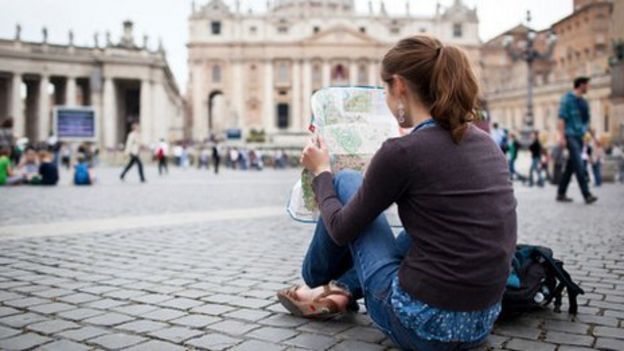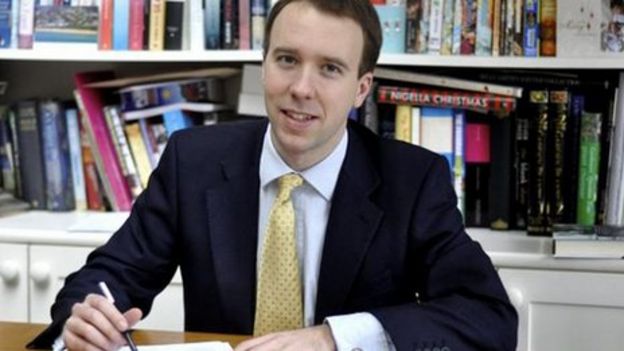Here is the first cartoon we will study:
 |
Steve SACK, on www.startribune.com,
Gun Lobby and Congress (2010)
|
Description: This document is a cartoon by Steve SACK published on the news website star tribune in 2010. In this cartoon we can see two small fat men in suits, one of them (on the left) represents a gun lobby and the second one (on the right) represents Congress. The man on the left is handing a big bag of money to the man on the right. Behind them, we can see Congress with the American Flag (aka star-spangled banner). Running down the stairway is a long trail of blood that finishes in a puddle at the bottom of the stairs. The gun lobby has a speech bubble that reads "now where were we, before we were so rudely interrupted?"
Interpretation: We could interpret this image as an illustration of the corruption that takes place in congress, and the pressure they receive from gun lobbyists who manipulate the government to assure that no anti gun laws pass. The trail of blood coming down the stairs could mean that there has been a shooting in congress to make the whole situation even more paradoxical, and show that congress often suffers from gun violence in the country as well. The lobbyists speech bubble tells us that their transaction was interrupted, probably by the shooting, but he clearly isn't worried by the event. His facial expression shows that he is confident and sneaky. Clearly big companies and lobbyists are able to control our governments and states because they have been given far more power than they should have merely because they are the ones that bring the money into the country and maintain a stable and prosperous economy.
Useful definitions: The Second Amendment (Amendment II) to the United States Constitution protects the right of the people to keep and bear arms and was adopted on December 15, 1791, as part of the first ten amendments contained in the Bill of Rights.
The Founding Fathers of the United States are the individuals of the Thirteen British Colonies in North America who led the American Revolution against the authority of the British Crown and established the United States of America. Historian Richard B. Morris in 1973 identified the following seven figures as the key Founding Fathers: John Adams, Benjamin Franklin, Alexander Hamilton, John Jay, Thomas Jefferson, James Madison, and George Washington
The National Rifle Association of America (NRA) is an American nonprofit organization which advocates for gun rights.[3][5][6]Founded in 1871, the group has informed its members about firearm-related bills since 1934, and it has directly lobbied for and against legislation since 1975.[7] It is also the oldest continuously operating civil rights organization in the United States.[8]
Description: This document is a cartoon by Dave Grandlund and was published on his website www.davegrandlund.com in 2013. Its title is "Second Amendment and NRA". In this cartoon we can see two statues, the first is an old statue of a young man who could be a soldier from the time of the founding fathers, he carries a war riffle in his hand and the drawing is accompanied by the text: " Second Amendment, as defined by the Founding Fathers". The drawing on the right is of a larger man carrying at least three big modern riffles with a meaner look than the young man on the left. He is standing on a huge stack of gold ammo and the text that accompanies this second character is "The Second Amendment, as defined by the NRA".
Interpretation: This cartoon is trying to show that the Second Amndment has evolved since its creation, mainly because at first it was created to protect the right of the North American people to defend themselves and carry a gun to do so. That is why the statue on the left is of a young man who looks up in honor and seems slightly defenseless if he didn't have the riffle in his hand. We can see that the Second Amendment has been turned into much more than that today, especially because of big gun lobbies such as the NRA, seeing as they have so much power the lobbies are able to control and manipulate the restrictions and protective laws against gun bearing. This allows certain Americans to abuse of their right to bear a gun merely to defend themselves and authorizes almost anyone to get a hold of a gun and make any use of it. The dangers of legalized gun possession are therefore very high seeing as the government and congress haven't got much control over the laws and restrictions imposed to the public.
 |
Dave GRANDLUND, on www.davegranlund.com,
Second Amendment and NRA (2013)
|
Useful definitions: The Second Amendment (Amendment II) to the United States Constitution protects the right of the people to keep and bear arms and was adopted on December 15, 1791, as part of the first ten amendments contained in the Bill of Rights.
The Founding Fathers of the United States are the individuals of the Thirteen British Colonies in North America who led the American Revolution against the authority of the British Crown and established the United States of America. Historian Richard B. Morris in 1973 identified the following seven figures as the key Founding Fathers: John Adams, Benjamin Franklin, Alexander Hamilton, John Jay, Thomas Jefferson, James Madison, and George Washington
The National Rifle Association of America (NRA) is an American nonprofit organization which advocates for gun rights.[3][5][6]Founded in 1871, the group has informed its members about firearm-related bills since 1934, and it has directly lobbied for and against legislation since 1975.[7] It is also the oldest continuously operating civil rights organization in the United States.[8]
Description: This document is a cartoon by Dave Grandlund and was published on his website www.davegrandlund.com in 2013. Its title is "Second Amendment and NRA". In this cartoon we can see two statues, the first is an old statue of a young man who could be a soldier from the time of the founding fathers, he carries a war riffle in his hand and the drawing is accompanied by the text: " Second Amendment, as defined by the Founding Fathers". The drawing on the right is of a larger man carrying at least three big modern riffles with a meaner look than the young man on the left. He is standing on a huge stack of gold ammo and the text that accompanies this second character is "The Second Amendment, as defined by the NRA".
Interpretation: This cartoon is trying to show that the Second Amndment has evolved since its creation, mainly because at first it was created to protect the right of the North American people to defend themselves and carry a gun to do so. That is why the statue on the left is of a young man who looks up in honor and seems slightly defenseless if he didn't have the riffle in his hand. We can see that the Second Amendment has been turned into much more than that today, especially because of big gun lobbies such as the NRA, seeing as they have so much power the lobbies are able to control and manipulate the restrictions and protective laws against gun bearing. This allows certain Americans to abuse of their right to bear a gun merely to defend themselves and authorizes almost anyone to get a hold of a gun and make any use of it. The dangers of legalized gun possession are therefore very high seeing as the government and congress haven't got much control over the laws and restrictions imposed to the public.



